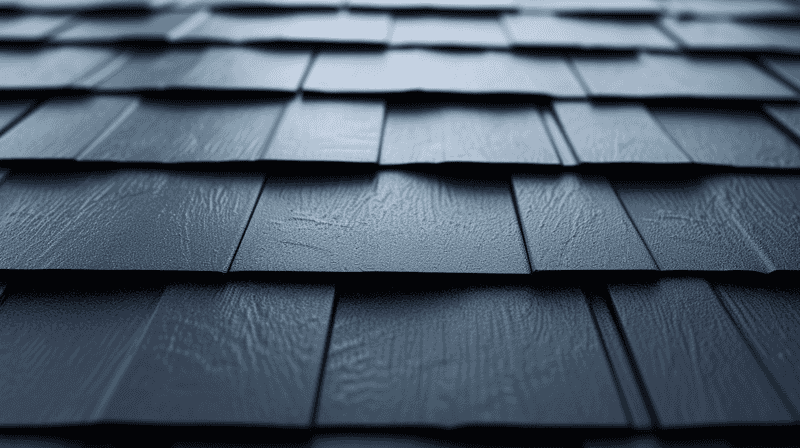When building a house, a key decision you will need to make is the style of your roof. One of the most popular choices among homeowners is the gable roof, a simple yet elegant shape that's perfect for many different types of homes. This style isn't just known for its aesthetic appeal, it also offers a multitude of practical benefits, like superior drainage and affordability. In this blog post, we will delve deep into the world of gable roofs, covering everything from its unique characteristics to its different types, and even how to properly maintain one.
Introduction to Gable Roofs
Gable roofs, also known as pitched or peaked roofs, are one of the most prevalent roof styles in the US. The gable roof consists of two sloping sides that come together at a peak, creating a triangle-like, pitched shape. This design allows the rain and snow to fall off the roof with ease, making it a practical choice for areas that frequently experience these weather conditions.
A Glimpse into the History of Gable Roofs
Gable roofs are not a recent architectural discovery. They have marked an significant presence throughout history, tracing back to ancient Greek and Roman architecture where they were a common sight on temples and houses. The simplistic and practical design quickly spread across the globe and remains a preferred choice even in the modern architectural landscape.
Types of Gable Roofs
While the traditional gable roof is quite straightforward in design, there are numerous variations of it. Each one is uniquely designed to meet different aesthetic and functional needs. Let’s explore some of the most common types:
- Classic Gable Roof: Also known as a straight or pitched gable roof, it is the most basic style with two equally pitched sides meeting at the top.
- Cross Gable Roof: Features two or more gable rooflines intersecting at an angle, often seen on houses with different wings.
- Dutch Gable Roof: A hybrid of the hip and gable roof styles, it provides the benefits of both designs, notably by offering more space beneath the roof.
Foxy Design Elements of Gable Roofs
Beyond their practical advantages, gable roofs also offer a playfield for designers to add stunning visual charm to a home. They present an opportunity for attic spaces, high ceilings, and even skylight installation, which can truly elevate the aesthetics and value of the property.
Attic and Loft Spaces
Thanks to the spacious triangle created by a gable roof, many owners choose to utilise this area by creating an attic or loft space. This proves to be a smart space solution particularly for smaller properties where extra storage or living space can make a significant difference.
Skylights and Windows
The sloping sides of a gable roof make it an ideal spot for skylights or windows, allowing natural light to flood into the home. Well-placed windows can also provide excellent ventilation, making the home more energy-efficient.
Maintaining Your Gable Roof
Maintenance is vital to nourish the longevity of your gable roof. Regular inspections can help spot potential problems early before they become expensive repairs. Here are some maintenance tips:
- Debris and moss removal should be performed regularly to prevent damage.
- Inspect for signs of aging, like missing or worn-out shingles.
- If you spot sagging or uneven areas on your gable roof, it could indicate a larger problem, so professionals should be informed immediately.
Wrapping Up
A gable roof not only enhances the curb appeal of a house but also brings practical benefits like better water runoff, increased attic space, and potential for energy efficiency. From ancient architecture to modern homes, gable roofs continue to be a sought-after choice amongst homeowners who appreciate its timeless aesthetic and practical functions. Whether you’re building a new home or considering a roof replacement, a gable roof could be the perfect fit for you.
Frequently Asked Questions about Gable Roof
How is a gable roof constructed?
A gable roof construction starts with a strong and level base that can support the roof's weight. The roofer will then set up two sloping sides that meet at the top to form the gable. The triangle section can be left open for an open gable roof or it can be enclosed for a boxed gable roof. Irrespective of the design, a protective layer of roofing materials is added to make it weatherproof.
What differentiates a gable roof from other roof types?
Gable roofs, sometimes called peaked or pitched roofs, stand out from other roofing styles due to their triangular shape. This is a simple design that enables easy water drainage and has the added benefit of providing more attic space.
Are gable roofs more expensive than other roof types?
Generally, the cost of a gable roof is somewhat comparable to that of other roof types. The final price can greatly depend on your choice of roofing materials, the size of your home, and your geographic location. However, due to its simple design and construction, a gable roof can often cost less than more intricate roof designs.
What type of material is frequently used for a gable roof?
Various types of materials can be used for a gable roof including, metal, asphalt shingles, wood shingles, clay, concrete tiles, or slate. The choice of material can largely depend on the climate of your location and your personal preference.
Are there different varieties of gable roofs?
Yes, gable roofs come in different types such as side gable, crossed gable, front gable, and Dutch gable roof. Each of these types can be identified by their unique shapes and features, yet they all share the common characteristic of the classic triangular shape.
How weather-resistant is a gable roof?
Gable roofs are generally good performers in locations with heavy rain and snow since their sloping design allows for efficient drainage. However, in areas prone to hurricanes or severe wind, a gable roof may not be the best option as the wind can cause an uplift underneath and cause the roof to detach.
What maintenance does a gable roof require?
All roofs require regular maintenance to ensure their longevity. For a gable roof, this may include checking for broken or missing shingles, ensuring the gutters are not clogged and inspecting for any signs of water leakage in the attic area. Regular checks and maintenance would help extend the lifespan of your gable roof.
How much attic space does a gable roof offer?
This largely depends on the rise and run of the roof's design. As gable roofs have a peak, they generally offer more space for an attic or vaulted ceilings compared to flat or shed roofs.
Can solar panels be installed on a gable roof?
Yes, solar panels can be installed on gable roofs. With the right orientation towards the sun, a gable roof can be ideal for this type of addition. However, the steep slope of some gable roofs may require additional mounting systems for solar panel installation.
Can I add a gable roof to an existing structure?
Yes, it's possible to add a gable roof to an existing structure. However, doing so requires considerable effort and expertise, as it involves significant structural changes. It's recommended to consult with a roofing professional or an architect in such cases.
Pros and Cons of Gable Roofs
Pros of Gable Roofs
Simple and Quick to Build
- The design of a gable roof is simple, making it faster and easier to construct. Due to its straightforward design, it does not require as much building material as other styles.
- Given the simplicity of its construction, a gable roof is typically less expensive to build compared to more complex roof types.
Aesthetically Pleasing
- Gable roofs, with their classic triangular shape, add a visually interesting element to the home's architecture.
- They can be adapted to different design styles and are compatible with many house designs, from traditional to modern.
Excellent Water and Snow Drainage
- Gable roofs provide excellent drainage of water and snow due to their sloped design, reducing the risk of water leakage and accumulated snow loads.
- The high pitch of gable roofs means that they are an ideal choice for regions with heavy rainfall and snowfall.
Additional Space
- Gable roofs can provide additional space for an attic, vaulted ceilings, or a loft. This allows more living space without expanding the house's footprint.
- They offer good ventilating spaces and allow more natural light into the house.
Cons of Gable Roofs
Vulnerable to High Winds and Hurricanes
- Gable roofs are less stable than hip roofs or flat roofs due to their steep pitch. In high-wind areas or in regions prone to hurricanes, gable roofs can get easily damaged.
- The gable end (the triangular portion of the wall beneath the points of the roof) can catch the wind like a sail, causing the roof to peel away. This is particularly a concern in poorly constructed or inadequately secured gable roofs.
Problems with Gable Ends
- Gable ends are often difficult to vent properly, leading to ventilation problems that can contribute to a buildup of heat and moisture in the attic.
- In case of vinyl or aluminum sidings, gable ends are also prone to warping.
Maintenance and Repair
- Gable roofs require proper maintenance and regular inspection for loose tiles or other damage to maintain their functionality and appeal.
- Since gable roofs are typically steep, it can be challenging and risky to clean, maintain, or repair them.
- If not adequately maintained, gable roofs' high susceptibility to wind damage can lead to higher overall maintenance costs.
Limited Design Options
- While gable roofs can suit many housing styles, the design is rather common and doesn't provide as many design possibilities as more complex roof styles like the mansard or hip roof.
- Unless properly designed, the high pitch of gable roofs can make homes appear taller than they are, which some homeowners might find unappealing.
Summary
When looking for a functional, affordable, and aesthetically pleasing option, a gable roof really stands out. Its striking design and superior drainage capability makes it a popular choice for homeowners across various climates. It's not just functional, it also provides additional space for ventilation or storage, enhancing its overall utility.
Yet, it's important to remember that despite these advantages, a gable roof may not be the right fit for all. Homes in areas with strong winds or hurricanes may face challenges due to the roof's steep pitch. However, with appropriate bracing and robust materials, this risk can be effectively reduced.
The decision to choose a gable roof should therefore be guided by your specific requirements, location, and budget. It's always highly recommended to consult with a professional before making a final decision. But if done right, a gable roof is a solid, stylish, and practical roofing solution.
About Roach Home Improvement
Welcome to Roach Home Improvement, your reliable partner in beauty and functionality enhancements for your home. Situated in Battle Creek, Michigan, we offer top-notch roofing services that are personalized to meet your unique needs. Decades of experience in the industry have trained us to deliver projects that not only enhance the aesthetics of your property but also add immense value. Our commitment to quality, timely delivery, and client satisfaction make us Battle Creek's preferred roofing company.








